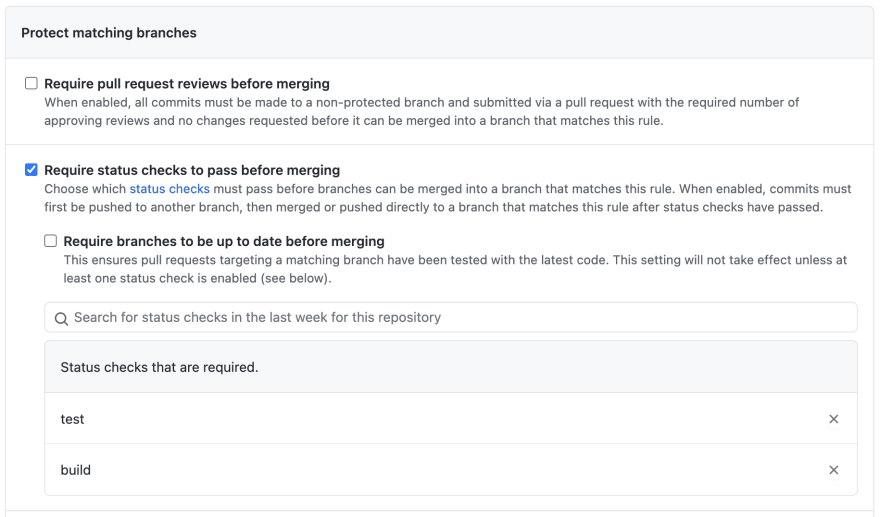65
A complete guide to use dependabot with semantic-release and @vercel/ncc for GitHub Actions
It is also easy to set up, however, it provides no chance to run a command in the PR, so we have additional considerations if we have some pre-release processes. For instance, for a GitHub Actions repository, we want to keep the dist directory updated by @vercel/ncc right after we update its dependencies.
This article introduces semantic-release as a solution. It automates the release process, and its exec plugin helps us to run @vercel/ncc before the release automatically.
Overview of the development process is like below:
- Dependabot creates a PR to update dependencies
- GitHub Actions test the change, and reflect its result to GitHub Checks
- Merge the PR manually or automatically
- GitHub Actions run on the default branch, and trigger the semantic-release
- semantic-release creates a Git tag, a GitHub Release, and a npm release
Check the following chapters for detail, or refer to my GitHub repo as a working example.
Make sure you have a npm project in your working directory, and run the following command to install semantic-release and its plugins:
npm add -D semantic-release @semantic-release/exec @semantic-release/gitIn package.json, confirm that we have a script to run ncc to optimize JS files like below:
"scripts": {
"package": "ncc build --source-map"
}Follow the official documents to configure semantic-release.
In my case, it became like below to use the main branch as default branch, and run exec plugin and git plugin:
"release": {
"branches": "main",
"plugins": [
"@semantic-release/commit-analyzer",
"@semantic-release/release-notes-generator",
"@semantic-release/npm",
"@semantic-release/github",
["@semantic-release/exec", {
"prepare": "npm run package"
}],
[
"@semantic-release/git",
{
"assets": [
"dist",
"package.json",
"package-lock.json"
],
"message": "chore(release): ${nextRelease.version} [skip ci]\n\n${nextRelease.notes}"
}
]
]
}Configure .github/dependabot.yml to enable dependabot. Make sure commit-message part is configured with prefix: fix to following the Conventional Commits.
version: 2
updates:
- package-ecosystem: npm
directory: "/"
schedule:
interval: daily
commit-message:
prefix: fix
prefix-development: chore
include: scopeTo merge PRs made by dependabot automatic, you may introduce probot-auto-merge. .github/auto-merge.yml will be like below:
minApprovals:
NONE: 0
requiredLabels:
- dependencies
updateBranch: true
mergeMethod: rebaseIf we apply NONE: 0 to minApprovals configuration to merge without manual review, make sure the branch protection rule is created for the default branch, to make sure PRs will be merged only when required status checks have passed.
There is no way to configure the branch protection rule by file, so you need to use GUI at github.com like below:

semantic-release needs a GitHub token to push a commit. But when we have branch protection rules for the target branch, secrets.GITHUB_TOKEN provides not enough permission so you'll face an error like below:
error: GH006: Protected branch update failed for refs/heads/main.
error: 2 of 2 required status checks are expected.To avoid this error, create a PAT and store it as an encrypted secret.
To keep our development environment secure, it's better to keep PAT's scope minimal as much as possible. In my case, just a public_repo scope is enough.
We have a PAT so now we can configure GitHub Actions workflow!
It'll be like below:
- uses: actions/checkout@v2
with:
# Make sure the release step uses its own credentials.
persist-credentials: false
- run: |
npm ci
npm run all
- name: Run semantic-release
# This process will run `ncc`, commit files, push a Git commit, and release to GitHub and npmjs.
run: |
npx semantic-release
env:
GITHUB_TOKEN: ${{ secrets.PAT_TO_PUSH }}
NPM_TOKEN: ${{ secrets.NPM_TOKEN }}Or you may refer to my workflow config as a working example.
Important points are as follows:
- Run
actions/checkoutwithpersist-credentials: false, orgitplugin will use the GitHub token generated byactions/checkout. - Set the PAT created at the previous chapter to
GITHUB_TOKENwhen we runnpx semantic-release.
Dependabot is really productive, even to GitHub Actions project that needs to keep the dist directory updated. semantic-release helps us not only by tagging but also by running commands to make the project ready to release.
There are several pitfalls around permission control, hope that this article helps you to avoid them. Enjoy hacking! :)
65
